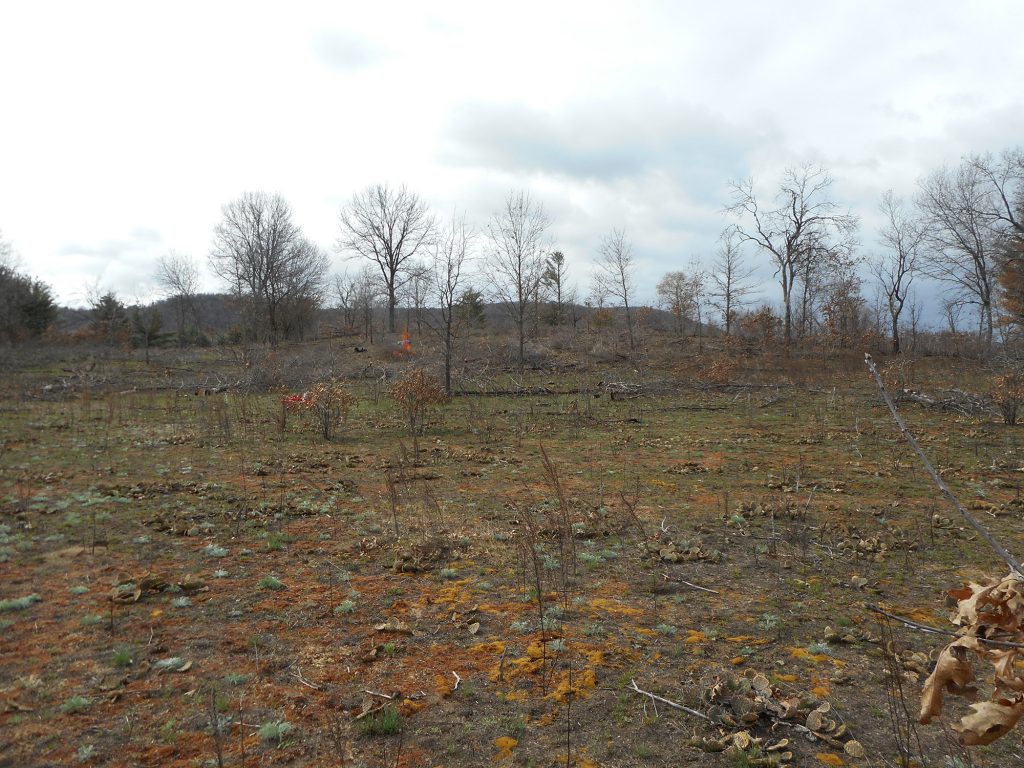2022| 2021 | 2020 | 2019 | 2018| 2017 | 2016 | 2015 | 2014 | 2013
2016 Highlights
Ornate Box Turtle Program
2016 was another busy year at the State Natural Area. We were fortunate to have some additional volunteer help in late winter through spring that allowed us to contribute the most hours since the volunteer effort began in 2012, logging 314 hours on 48 days.



Wood Turtle Nest Site Program Highlights
Two new nesting sites were created in 2016, one in Oconto County and one in Marinette County in northeastern Wisconsin. Of the 18 total nesting sites created or restored to date, 13 are equipped with electric fences. Management of all 18 sites was conducted this year to reduce or eliminate vegetation from the sites, a strategy that makes nesting by female turtles easier and also helps reduce the chance of roots penetrating the eggs.
Nest site monitoring continued in 2016 on the four nest sites in northwestern, Wisconsin that were monitored in 2015. These four sites had 18 Wood Turtle nests, all laid in June. Hatching occurred from mid-August through early October producing 102 hatchling. Nesting success was down from 2015, due in part to heavy rainfall, including a six inch storm on late June post nesting, that cumulatively resulted in cooler incubation temperatures in 2016. Over 100 viable eggs perished sometime during incubation, with the majority of the embryos being well developed before dying. While sad to see this high egg mortality rate, it was encouraging to see so many hatchlings emerge, especially when compared to hatching success prior to the use of electric fenced nesting sites. These two years of data are beginning to paint a sweet picture for this rare turtle since their recovery is dependent in part on increasing hatch rates. The other nine electric fenced nest sites experienced no predation in 2016! We have a growing level of confidence that these fenced nest sites will allow us to achieve recovery, at least on the rivers where we have multiple nesting sites (n = 9 to date). Plans for 2017 include the creation of four additional electric fenced sites in four counties and adding electrical fences at two existing nest sites in one county.
In 2016 we continued the camera monitoring study initiated in 2015 to compare nest sites with electric fences to those that are currently unfenced. We switch one of the sites in 2016 due a road closure. During the 2016 nesting season we generated over 142,500 photos using time lapse and infrared motion detection. The electric fenced sites and one of the unfenced sites experienced no predation in 2016, while the second unfenced sites experienced 100% Wood Turtle nest predation (n = 5 nests) and only one of several Snapping Turtle nest survived predation. Camera monitoring will continue through 2019, and will include the monitoring of two nest sites that were not fenced in 2015 and 2016 to evaluate changes in predation rates resulting from electric fence installations at those sites beginning in 2017.



Blanding’s Turtles Telemetry Program Achievements
This study continued in 2016, but with a different focus. While the tracking of headstarted Blanding’s turtles continued, there were only six individuals remaining in the study. By the end of the 2016 field season, one of the headstarts had died (reason unknown), one was unrecoverable due to habitat inaccessibility, and one lost its transmitter. Two other headstarts are unaccounted for and the last remaining individual of the six was released after removing it transmitter in the fall of 2016.
In June of 2016 two Blanding’s Turtle nest were located at the telemetry study site. The eggs removed from the nests and incubated at UW-Whitewater. Upon hatching in August these turtles were fitted with micro-transmitters and were released at the study site within several days of hatching. The hatchlings were located twice weekly to determine their movements and survival rates for approximately one month (late August through late September). During this period, no predation or other mortalities were observed. Turtle movements were minimal (several square meters) and most buried close to where they were released in the wetlands where they were originally placed. The data is currently being analyzed to compare survival rates of headstarted Blanding’s Turtles from the original study to hatchling survival in this brief studying.
The telemetry study has been terminated prematurely due to complicating factors including higher than expected mortality rates, transmitter failure and loss, and the need to switch out transmitter twice annually due to small turtle size, and habitat inaccessibility.


2022| 2021 | 2020 | 2019 | 2018| 2017 | 2016 | 2015 | 2014 | 2013